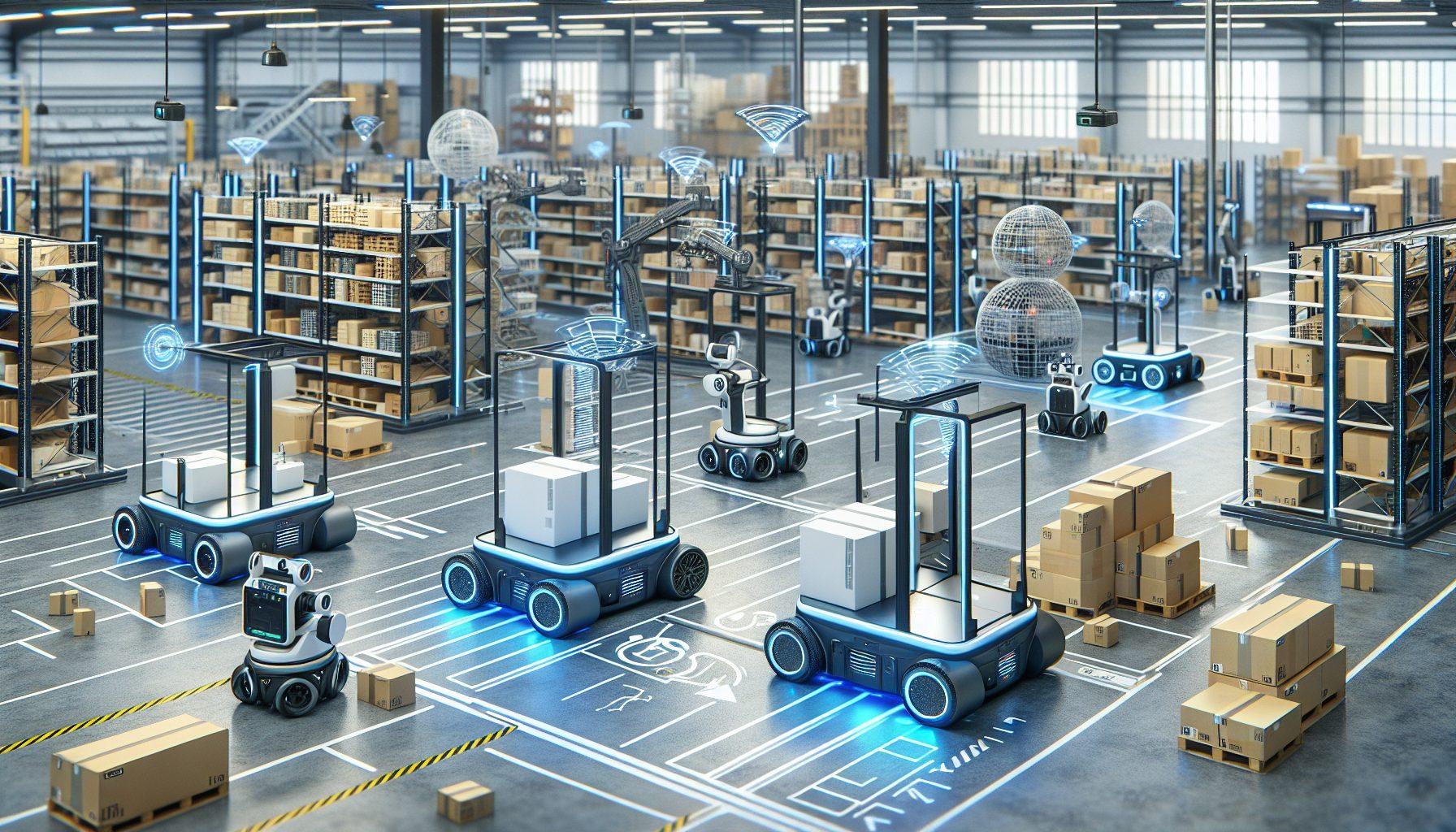In today’s fast-paced and ever-evolving world of warehousing and logistics, finding ways to optimize operations and reduce costs has become crucial for businesses. One area that has seen significant advancements in recent years is warehouse transportation. Traditional methods of transport such as forklifts and manual labor are being replaced with more efficient and cost-effective solutions.
The Role of AGVs in Reducing Warehouse Transportation Costs
One such solution that has gained popularity is the use of Autonomous Guided Vehicles (AGVs). AGVs are robotic vehicles equipped with sensors and advanced software algorithms that enable them to navigate and perform tasks autonomously. They can transport goods within a warehouse without the need for human intervention, eliminating the risks associated with manual handling and reducing labor costs.
AGVs offer several benefits that directly contribute to reducing warehouse transportation costs:
- Increased Efficiency: AGVs are programmed to follow the most optimized routes, ensuring timely and efficient transportation of goods within the warehouse. They can also be integrated with warehouse management systems to streamline order picking and minimize travel time.
- Improved Safety: AGVs are equipped with advanced sensors that enable them to detect obstacles, humans, and other vehicles in their path. This reduces the risk of accidents and injuries, resulting in lower insurance costs and improved overall safety in the warehouse.
- 24/7 Operation: Unlike human workers, AGVs do not require breaks or rest time. They can operate continuously, allowing for round-the-clock operations in warehouses. This not only increases productivity but also reduces the need for overtime wages.
- Reduced Maintenance Costs: AGVs are designed for durability and require minimal maintenance compared to traditional equipment such as forklifts. This translates to lower maintenance costs and reduces the impact of equipment breakdowns on overall operations.
By implementing AGVs in warehouse transportation, companies can experience significant cost savings over time. The initial investment required for adopting AGVs may seem high, but the long-term benefits outweigh the upfront costs. AGVs are scalable and can be customized to meet the specific needs of each warehouse operation.
Moreover, HCO Innovations, a leading provider of warehouse optimization solutions, offers comprehensive AGV deployment services. HCO’s team of experts helps businesses evaluate their warehouse operations, identify areas for improvement, and develop tailored AGV solutions that align with their goals and budget.
HCO Innovations’ AGV deployment services include:
- Needs Assessment: HCO’s team conducts a thorough analysis of the warehouse layout, inventory management systems, and transportation requirements to determine the most suitable AGV solution.
- AGV Selection and Integration: Based on the needs assessment, HCO recommends the most appropriate AGV models and assists with their integration into existing systems.
- Software Integration: HCO ensures seamless integration of AGVs with warehouse management systems, enabling real-time tracking, inventory optimization, and data-driven decision-making.
- Training and Support: HCO provides training to warehouse staff on AGV operation and maintenance. They also offer ongoing support to address any issues or concerns that may arise during the AGV deployment phase.
With HCO Innovations’ AGV deployment services, businesses can unlock the full potential of AGVs in reducing warehouse transportation costs. By leveraging advanced technology and expertise, companies can achieve increased productivity, improved efficiency, and a significant reduction in operational expenses.
In conclusion, AGVs are revolutionizing warehouse transportation and offering immense cost-saving potential for businesses. By investing in the right AGV solution and partnering with experts like HCO Innovations, companies can optimize their warehouse operations, enhance safety, improve productivity, and ultimately reduce transportation costs.
Learn more about how HCO Innovations can help your warehouse achieve optimal AGV deployment here.

